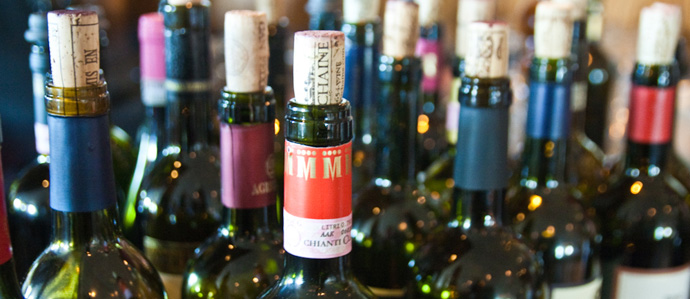Different Types Of Wine and Their Characteristics
By Antoinette DeJure | Updated on 12/27/2023
Wine, a beverage revered for centuries, boasts a rich tapestry of flavors, aromas, and textures that continually intrigue enthusiasts and casual drinkers alike. Understanding the types of wine can aid in personalizing one’s wine experiences and enhancing culinary adventures.
Red Wines
Derived from the dark-colored grape varieties, red wines exhibit deep, ruby hues. Popular red wines include Cabernet Sauvignon, Merlot, Pinot Noir, and Shiraz. These wines are cherished for their robust flavors, often echoing notes of berries, plums, and spices. Red wine is red because the black or dark-colored grape skins are left on the grapes during the fermenting process. Grape skins are high in tannin and that is what causes the bitterness in red wine. It tends to leave a dry aftertaste in your mouth. The recommendation is to serve it at room temperature or just below. Chilling causes it to be more bitter.
White Wines
Produced using green and gold grape varieties, white wines can range from dry to sweet. White wine is fermented with either black or white grapes but the skins are removed before the process. It is low in tannins making it tart or crisp because of its high acidity. Not a bad start even for those enjoying it with lighter, lower-calorie dishes like fish or salad. Examples include Chardonnay, Sauvignon Blanc, and Riesling. They often possess fresh and zesty flavors reminiscent of green apples, citrus fruits, and tropical notes.
Rosé Wines
Straddling the line between reds and whites, rosés have a pinkish hue, achieved by allowing grape skins to remain in contact with the juice for a short duration. Grenache and Pinot Noir grapes often lead to delightful rosés with flavors of strawberries and rose petals. Rosé wine is crisp and refreshing with a slightly sweet flavor. This is ideally the top choice for the novice wine drinker. It’s low in tannins. Varieties include White Zinfandel, Pinot Noir, Triennes Rosé, and Sangiovese Rosé. Grape varieties are commonly combined giving rosé wines a variety of characteristics. This is a popular summertime pick.
Sparkling Wines
Bubbly and effervescent, these wines undergo a secondary fermentation process trapping carbon dioxide and resulting in bubbles. While Champagne is the most famous sparkling wine, hailing exclusively from the Champagne region in France, there are others like Prosecco from Italy and Cava from Spain.
Sweet or Dessert Wines
These wines, like Port, Sauternes, and Ice Wine, have a heightened sweetness, often because the fermentation process is halted before all the grape sugars convert to alcohol. They make an ideal pairing with desserts or can be enjoyed on their own.
Fortified Wines
By adding distilled spirits, typically brandy, these wines have elevated alcohol content. Examples include Port, Sherry, and Madeira. They are rich, complex, and can be either dry or sweet.
The world of wine is vast and magnificent, and each sip invites us to celebrate life’s beautiful moments.

